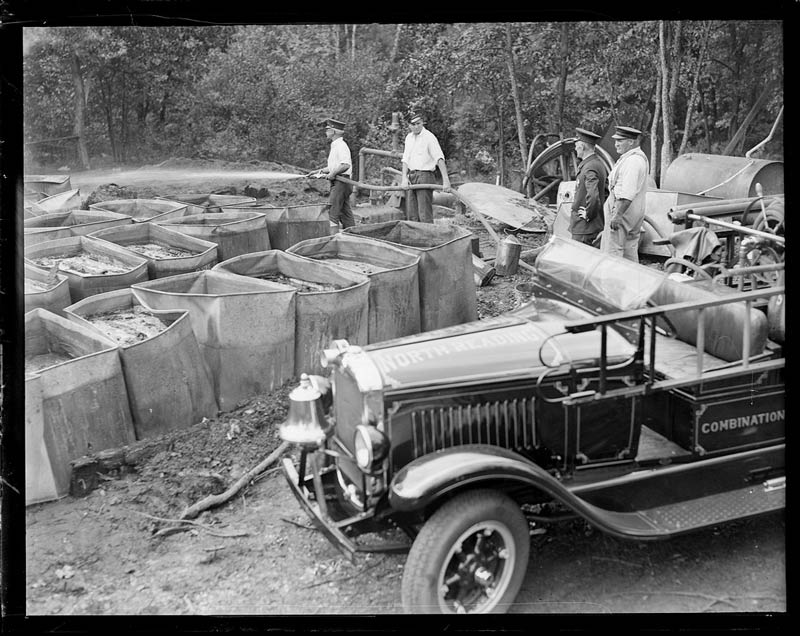EARLY HISTORY OF THE BOSTON MOB

In the current Hadley Sisters Mystery series, which takes place in the late 1930s, the sisters have run into organized crime in every book. Sometimes it has been subtle and sometimes it has been obvious. Whatever way it is seen, the sisters were not surprised. Why? Because there had been mob crime since before they were born. And the sisters were familiar with the newspaper reporting. The only surprise was that the two became involved. Here is the backstory of Boston mob action up until the late 1930s.
The first appearance of criminal mobs in Boston seems to be in the mid-1910s when brothers Frank and Steve Wallace formed a group calling themselves tailboard thieves. These kids started by looting and hijacking trucks that were stopped at street intersections. Apparently, that worked well enough that they added armed robbery to their collection of crimes soon enough. They renamed themselves the Gustin Gang, after a street in Southie, a predominantly Irish section. As they grew, the brothers took on a younger brother, Jim, and a few friends.
Meanwhile, in the Italian North End, Gaspare Messina started a group of men bent on crime in 1916. Not too far away, in Providence, Frank Morelli got a group together the next year. They specialized in bootlegging and gambling. They were soon active in Providence, Maine and Connecticut.
The 1920s and early 30s saw a power struggle in Boston, with rival gangs fighting for their piece of the businesses of loan sharking, illegal gambling, bootlegging. Messina stepped down as Mafia boss and worked with Frank Cucchiara and Paolo Pagnotta throughout New England. Filippo Buccola became the Mob boss and Messina became temporary capo in the first few years of the new decade.
Meanwhile, the Gustin Gang expanded their money-making schemes, adding larceny, trespassing, gaming, assault and battery to the bootlegging that the Prohibition had created. The Wallace brothers bought boats so that they could go out into international waters to get the well-selling alcohol. They even impersonated government officials to confiscate alcohol from other rumrunners and sold that, too. An older brother, Samuel, had a bar which they kept supplied.
A young Russian immigrant, Charles Solomon, was controlling the majority of illegal gambling and narcotics sales by the start of the Prohibition, when he expanded his holdings into bootlegging, himself, with partner Dan Carroll. They owned a number of speakeasies including the famous Cocoanut Grove, by 1927, in downtown Boston. He had extensive contacts in Canada, New York and Chicago. Unfortunately, in 1922, Solomon was tried on narcotics charges, but acquitted. He was defended by the famous Grenville MacFarlane, who was a drug abuse crusader, and probably much richer than before the trial. In 1929, Solomon became one of the “Big Seven”, a precursor to the Murder, Inc. franchise of the 1940s and 50s. He was probably the preeminent gangster of Boston.
On December 22, 1931, Frank Wallace and his lieutenant Bernard Walsh, were invited by Joe Lombardo, Buccola’s underboss, to a meeting to discuss the various mob activities and how they could ease rivalries. The two Gustin Gang members walked into an ambush at the CK Importing Company, 319 Hanover St, in the Italian North End. Their murders ended Irish mob preeminence for over thirty years. The Italians had risen to power.
In the 1930s, Frank Buccola and his underboss, Joseph Lombardo, had battled with rivals in Boston and got the power. In 1932, Frank Morelli, the founder of the Providence mob, merged his business with Boston. Buccola became the underboss of the regional mob and continued to have his competition done away with.
Early in January, 1933, Charles Solomon and several others were indicted on charges of operating a liquor smuggling ring. Solomon was murdered, on orders of Buccola, within weeks, at the Cotton Club in Boston. Buccola was now the most powerful gangster in Boston. Another co-conspirator was killed in his home two months later. Hyman Abrams, Solomon’s lieutenant during the Prohibition, soon left the area. He ended up financing Las Vegas casinos with Meyer Lansky and others during the 1950s and 1960s. Solomon’s brothers and several confederates inherited Solomon’s holdings. His lawyer, Barney Walensky, got the Cocoanut Grove. And here is where the Hadley sisters come in.

did buccola use irish gunman to eliminate solomon.
Thank you for asking. I haven’t found out who actually killed Solomon. It may have been a little too early in Buccola’s career to have commandeered the Irish mob.